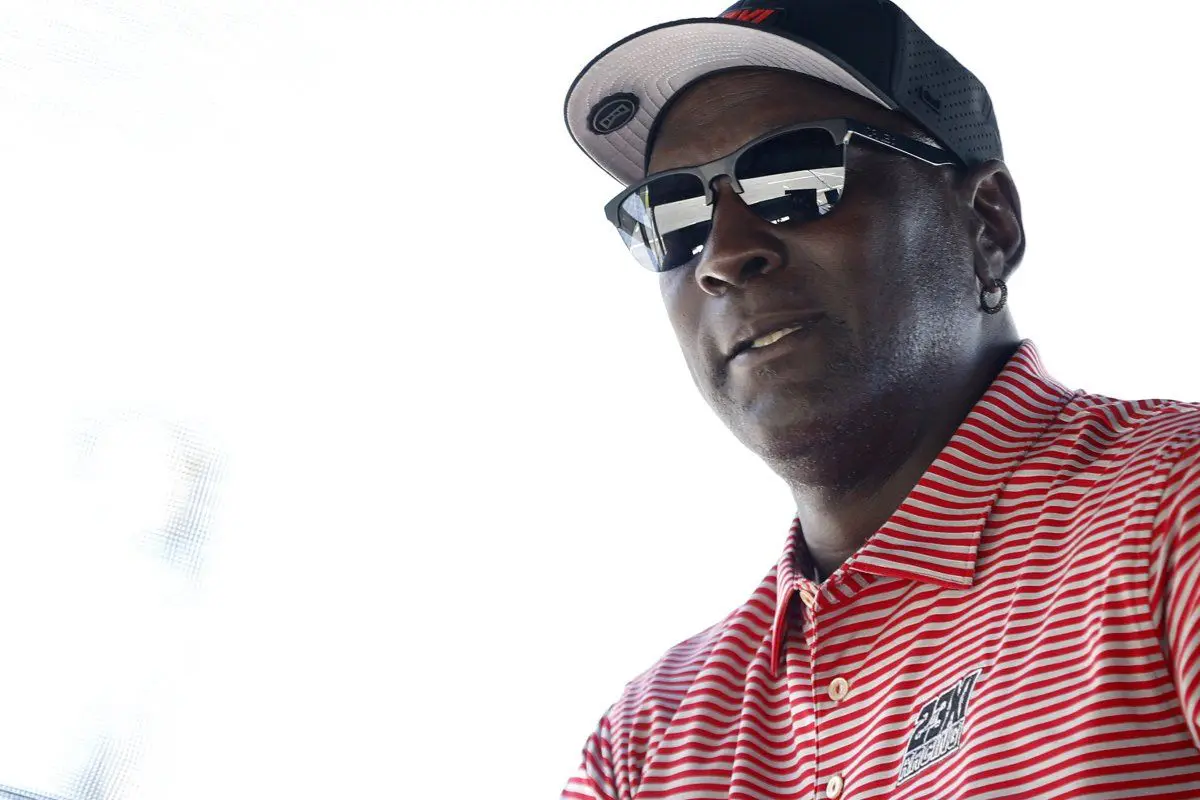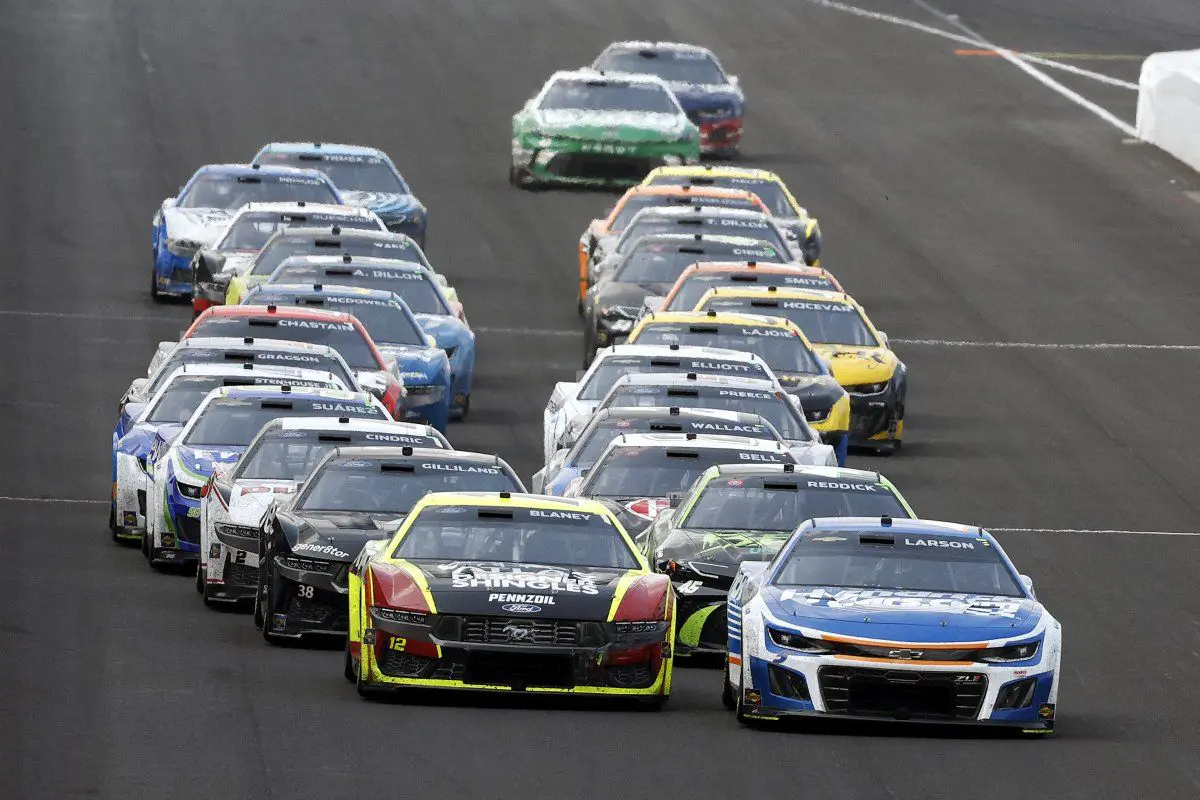The NASCAR-Michael Jordan Face-Off: The escalating tension between NASCAR and Michael Jordan’s 23XI Racing raises critical questions about the integrity of the sport’s charter system and its broader implications for team ownership dynamics. As both entities grapple with the complexities of financial equity and operational authority, the potential for a billion-dollar legal confrontation looms large. This situation not only threatens to disrupt NASCAR’s established governance but also highlights the challenges of integrating high-profile figures into traditional frameworks. What could this mean for the future of motorsport, and how might it reshape the competitive landscape?
Key Highlights
- 23XI Racing’s refusal to sign new charter agreements may lead to legal confrontations with NASCAR, potentially escalating tensions.
- Michael Jordan’s financial resources could challenge NASCAR’s governance, raising issues like collusion and antitrust violations.
- A billion-dollar legal battle could set significant precedents for future sports-related disputes, impacting NASCAR’s operations and reputation.
- The outcome of this conflict could reshape NASCAR’s policies, governance, and fan engagement strategies moving forward.
- Negative publicity from a legal showdown may result in financial repercussions for NASCAR, affecting sponsorships and partnerships within the motorsport industry.
Current Charter Agreement Controversy
Amid the recent renewal of NASCAR Cup Series charter agreements, a vital rift has emerged, particularly with 23XI Racing’s refusal to sign the deal. This decision raises considerable questions regarding the implications for both the team and the broader NASCAR landscape.
As 23XI Racing and Front Row Motorsports stand apart from the majority of teams that have acquiesced to the new terms, the potential for discord looms large. The refusal to sign the charter agreement may signal deeper tactical considerations at play.
For 23XI Racing, co-owned by Michael Jordan, the decision could be a calculated move to redefine the terms of engagement with NASCAR, potentially seeking more favorable conditions that align with their competitive aspirations. This raises a vital inquiry: what actions will NASCAR take in response to these dissenting voices?
The governing body may face stress to uphold the integrity of the charter system while ensuring that teams feel incentivized to participate. Moreover, the implications extend beyond immediate contractual disputes.
The rift may catalyze broader discussions on the sustainability and inclusiveness of the charter system, especially in view of the evolving competitive landscape. Should NASCAR choose to impose penalties or restrictions on teams like 23XI and Front Row Motorsports, it may inadvertently prompt a legal confrontation, complicating the dynamics of the sport.
As the situation unfolds, the potential for a confrontation between NASCAR and dissenting teams is palpable, highlighting the need for a tactical resolution that harmonizes interests while maintaining the sport’s integrity.
Evolution and Ideology of the Charter System
How has the charter system in NASCAR evolved to reflect the changing dynamics of the sport? Initially conceptualized as a form of assurance for teams, charters—formerly referred to as medallions—were designed to secure a guaranteed spot on the race grid. This foundational role provided teams with intrinsic value that extended beyond their physical assets, fostering a sense of stability within the competitive landscape.
Over time, the ideology behind the charter system shifted, evolving into a collective mechanism for teams to assert their influence within the NASCAR framework. As teams recognized their critical role in the sport’s ecosystem, they began to challenge the traditional oligarchic structure of NASCAR. This newfound assertiveness has been instrumental in negotiating for a larger share of the revenues generated by the sport, especially in view of lucrative television deals.
The charter system has consequently become a vehicle not only for economic stability but also for fostering collaboration among teams. While the system was initially framed as a means of securing participation, it has morphed into a platform for collective bargaining, enabling teams to advocate for a more equitable distribution of resources.
As NASCAR navigates its evolving landscape, the charter system stands as a reflection of the interplay between economic necessity and ideological evolution, capturing the sport’s ongoing quest for balance between competition and commercial viability.
NASCAR’s Persistent Control and Market Comparisons
Despite the evolution of the charter system, NASCAR’s governance remains characterized by a centralized authority that mirrors its historical dominance. The introduction of the charter system was intended to modernize the sport and align it more closely with the operational frameworks of major leagues like the NFL and NBA. However, this shift has not eradicated NASCAR’s dictatorial tendencies, as evidenced by its reluctance to fully relinquish control.
Key elements of NASCAR’s persistent control include:
- Centralized Decision-Making: Critical decisions are still made by a select group within NASCAR, minimizing input from team owners and stakeholders.
- Opaque Financial Practices: The organization has maintained a veil over its financial records, which raises concerns about transparency and accountability.
- Market Resistance: Unlike other major sports leagues that have experienced substantial increases in franchise values, NASCAR’s growth in this area remains stagnant, questioning the effectiveness of its current governance structure.
- Emerging Challenges: Figures like Michael Jordan represent a new wave of ownership that could disrupt traditional norms, potentially leading to legal confrontations that could challenge NASCAR’s authority.
This centralized approach, while historically effective, may ultimately stifle innovation and hinder the sport’s growth.
As the landscape evolves, the dichotomy between NASCAR’s control and the expanding interests of its franchise owners, particularly those like Jordan, will be critical in shaping the future of the sport.
Owner and Team Financials
As NASCAR navigates the complexities of ownership dynamics and financial viability, the varying fortunes of its team owners reveal a landscape marked by considerable disparities. The financial health of each team not only reflects individual owner wealth but also influences their tactical decisions within the sport.
The following table demonstrates the contrasting financial positions of several prominent NASCAR teams and their owners:
| Team | Team Value | Owner Net Worth |
|---|---|---|
| Joe Gibbs Racing | $230 million | $60 million |
| Hendrick Motorsports | $315 million | $1 billion |
| Team Penske | $200 million | $3.8 billion |
| 23XI Racing | $150 million | $3.2 billion |
Joe Gibbs, at 83 years, prioritizes the solvency of his team over personal wealth accumulation, while Rick Hendrick’s substantial net worth allows him to navigate NASCAR’s financial intricacies with ease. Roger Penske, likely disinterested in charters, focuses on broader racing ambitions, potentially detracting from NASCAR’s immediate concerns. In contrast, Michael Jordan, with a keen understanding of franchise valuation, is poised to capitalize on his investments for notable returns.
These financial disparities highlight the varying motivations and capabilities of NASCAR team owners, shaping their engagement with the series and its governance. The balance between financial insight and competitive spirit within this domain is vital for the sustainability of both individual teams and the NASCAR ecosystem as a whole.
Potential Legal Battle and Historical Parallels
The prospect of a legal confrontation between NASCAR and Michael Jordan could evoke notable changes in the competitive landscape of the sport. Jordan’s competitive nature, honed on the basketball court, positions him as a formidable adversary in this new arena. With substantial financial resources at his disposal, he may pursue legal action against NASCAR, potentially triggering a complex web of issues such as collusion, antitrust violations, and restrictive business practices. The implications could redefine the governing dynamics within the sport.
Historical precedents demonstrate the gravity of such confrontations:
- John Elway’s Trade: In 1983, Elway’s contentious trade led Al Davis to challenge the NFL, exposing questionable business practices and ultimately reshaping franchise dynamics.
- Al Davis vs. NFL: Davis’s legal tactics not only secured his team’s relocation but also highlighted the vulnerabilities within league governance.
- Jordan’s Ruthlessness: Known for his relentless pursuit of victory, Jordan’s approach to competition might compel NASCAR officials to reconsider their tactical positioning.
- Power of Influence: With Jordan’s stature as a global icon, his influence could mobilize public sentiment, further complicating NASCAR’s response.
As this scenario unfolds, NASCAR may find itself steering through treacherous waters. The stakes are high, and the potential for a billion-dollar legal showdown looms large, serving as a lens through which the sport’s future may be refracted.
News in Brief: The NASCAR-Michael Jordan Face-Off
The escalating conflict between NASCAR and 23XI Racing represents a crucial moment in the sport’s governance, with potential ramifications extending far beyond individual team dynamics. As the complexities of charter agreements and financial inequalities come to the forefront, this dispute may catalyze important legal challenges. The outcomes of this confrontation could redefine ownership structures and revenue-sharing models within NASCAR, ultimately reshaping the competitive landscape and governance of the sport for years to come.
ALSO READ: Michael Jordan’s NASCAR Vision: Is Racing Becoming His New Obsession?




